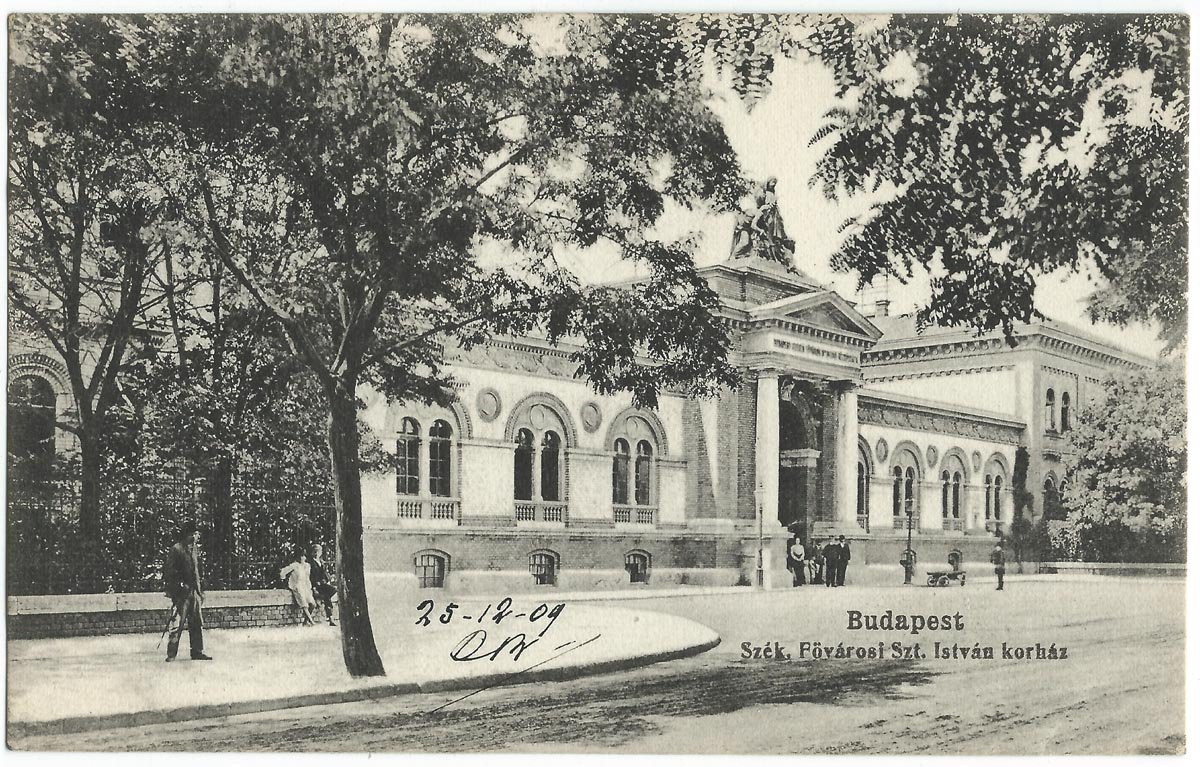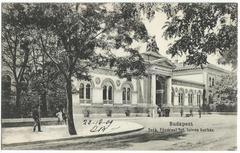
Nagyvárad Square Budapest: Visiting Hours, Tickets, and Travel Guide
Date: 15/06/2025
Introduction
Nagyvárad Square (Nagyvárad tér) is a pivotal urban landmark in Budapest, Hungary, blending historic resonance with vibrant contemporary life. Named after the historic Hungarian city of Nagyvárad (today Oradea, Romania), this square is not only a crossroads of the city’s southeastern Pest side but also a symbol of Hungary’s cultural memory and shifting Central European identities post-Trianon. Today, Nagyvárad Square stands as a vital medical and educational hub—anchored by the Semmelweis University medical campus—serving students, healthcare professionals, and commuters alike. With its accessible metro station, diverse amenities, local eateries, and proximity to green spaces, Nagyvárad Square offers visitors a nuanced perspective on Budapest’s evolving urban fabric.
This guide provides a comprehensive look at Nagyvárad Square’s history, visitor information, accessibility, key attractions, and practical travel tips. Whether your interests are academic, medical, or leisure, this resource will help you make the most of your visit.
Historical Background and Urban Significance
Origins and Naming
Nagyvárad Square’s name pays homage to the former Hungarian city of Nagyvárad, now Oradea in Romania, reflecting Hungary’s historical geography and the impact of the Treaty of Trianon in 1920 (Wikipedia: Nagyvárad tér metro station). This naming convention underscores the square’s role in preserving national memory and identity.
Urban Development
The square rose to prominence during Budapest’s urban expansion in the late 19th and 20th centuries. Following the city’s unification in 1873, modern planning transformed Nagyvárad Square into a major transit and institutional node. The 1976 inauguration of the M3 (blue) metro line made it a key transit hub, while post-war socialist planning cemented its role as the epicenter of Budapest’s medical district, with new hospitals and university buildings (History of Budapest).
Key Attractions and Points of Interest
Semmelweis University and Medical Campus
Founded in 1769, Semmelweis University is Hungary’s foremost medical institution. Its main campus, situated around Nagyvárad Square, showcases a blend of historic and modern architecture. Visitors can walk the grounds freely or book guided tours through the university (Semmelweis University Official Website), gaining insight into medical history and academic life.
Church of St. Ladislaus
A short stroll from the square, the Church of St. Ladislaus (Szent László Plébániatemplom) exemplifies neo-Gothic architecture with its ornate façade and towering spire. Open daily (usually 9 AM–6 PM), the church is free to enter and sometimes hosts concerts and community events (Budapest Churches).
Orczy Park
East of Nagyvárad Square lies Orczy Park, one of the city’s largest inner-city green spaces. Open from 6 AM to 10 PM, it offers walking paths, a boating lake, playgrounds, and the Hungarian Natural History Museum. It’s popular for recreation, especially among students (Orczy Park).
Public Art and Green Spaces
The square is dotted with public art installations, statues honoring medical pioneers, and shaded lawns—providing peaceful spots for relaxation amid the urban bustle.
Local Life
Nagyvárad Square is a lively hub, animated by university students, hospital staff, and a multicultural local community. The surrounding districts—Józsefváros (8th) and Ferencváros (9th)—offer a mix of traditional Hungarian and international eateries, markets, and cultural venues (GoAskALocal Budapest Travel Guide).
Visiting Nagyvárad Square: Practical Information
Accessibility
The square and all major buildings, including the metro station, have been recently upgraded for accessibility. Elevators, ramps, tactile paving, and clear bilingual signage ensure ease of movement for wheelchair users and those with limited mobility (WeLoveBudapest: Accessible Budapest).
Transportation
- Metro: The M3 (blue) metro line connects Nagyvárad tér directly to the city center and other districts. The station is fully accessible and operates from 4:30 AM to midnight (Budapest Metro Official Timetables).
- Tram and Bus: Tram lines 23 and 24, as well as numerous buses, serve the square, including night services (Moovit Public Transit App: Nagyvárad tér).
- Cycling and Walking: Dedicated bike lanes and pedestrian-friendly zones make it easy to explore the area on foot or by bike.
Tickets and Fares
Budapest’s integrated ticketing system covers all public transport. Single tickets, travel cards, and tourist passes can be purchased at metro stations, vending machines, newsstands, or via the BudapestGO app (Budapest.org: Travel Tips, Budapest Metro Official Timetables).
Payment Methods
Most machines and local shops accept credit/debit cards, but carrying some Hungarian Forints (HUF) is advised.
Facilities and Services
- Restrooms: Available in the metro station and university buildings.
- ATMs, Pharmacies, and Shops: Plentiful in the area.
- Wi-Fi: Free Wi-Fi is accessible at the metro station and in many cafes.
Safety
The area is generally safe, with visible police presence. As with any urban area, remain aware of your belongings, especially during rush hours (TripToBudapest: Practical Tips).
Cultural Context and Local Life
Multicultural Community
Nagyvárad Square reflects the diversity of Budapest’s 8th and 9th districts, with a rich tapestry of Hungarian, Romani, immigrant, and student communities. This diversity is visible in local markets, food offerings, and cultural events.
Academic and Medical Influence
The proximity to Semmelweis University and major hospitals shapes the square’s daily rhythm. Cafés and bakeries cater to students and staff, while cultural venues in nearby districts offer concerts, exhibitions, and events (GoAskALocal Budapest Travel Guide).
Architecture
The square features a mix of late 19th-century and functionalist 20th-century buildings, showcasing Budapest’s layered urban history (WeLoveBudapest: Top 10 Prettiest Public Squares).
Practical Visitor Tips
- Best Times to Visit: The academic year (September–June) is the most active, with a lively student presence; spring and autumn offer pleasant weather (Budapest Climate).
- Food: Try Hungarian classics like goulash and lángos at local eateries; for global cuisine, explore nearby districts.
- Language: Hungarian is the main language, but English is widely spoken in university and tourist settings. Signage is bilingual.
- Tipping: 10–15% is customary in restaurants and taxis.
- Local Etiquette: Dress is casual but neat; locals are typically reserved but helpful if approached politely (Reddit Guide).
Frequently Asked Questions (FAQ)
Q: Is there an entrance fee for Nagyvárad Square?
A: No, the square is a public space and free to visit.
Q: Are there set visiting hours?
A: The square is open 24/7. The church is open 9 AM–6 PM; Orczy Park is open 6 AM–10 PM.
Q: Is the area wheelchair accessible?
A: Yes, recent renovations provide full accessibility.
Q: How do I buy public transport tickets?
A: At metro stations, vending machines, newsstands, or via the BudapestGO app.
Q: What’s the safest way to visit?
A: The area is safe, especially during the day; exercise standard urban caution at night.
Summary and Final Tips
Nagyvárad Square is a dynamic intersection of Budapest’s history, academia, healthcare, and multicultural local life. Its excellent connectivity, recent upgrades, and proximity to key attractions make it both a practical transit hub and a rewarding destination in its own right. Whether you’re exploring the medical campus, relaxing in Orczy Park, or diving into local culture, Nagyvárad Square offers an authentic Budapest experience.
For up-to-date transit and visitor information, use the BudapestGO app. For broader travel insights, consult WeLoveBudapest and GoAskALocal.
Visual Resources
Alt text: Panoramic view of Nagyvárad Square with Semmelweis University buildings and green spaces.
Alt text: Neo-Gothic façade of the Church of St. Ladislaus near Nagyvárad Square.
Interactive map of Nagyvárad Square and nearby attractions
Official Sources and Further Reading
- Wikipedia: Nagyvárad tér metro station
- History of Budapest
- Budapest Tourist Info: History
- WeLoveBudapest: Accessible Budapest
- Moovit Public Transit App: Nagyvárad tér
- Budapest Metro Official Timetables
- Budapest.org: Travel Tips
- TripToBudapest: Practical Tips
- GoAskALocal Budapest Travel Guide
- WeLoveBudapest: Top 10 Prettiest Public Squares
- Budapest Events Calendar
- Semmelweis University Official Website
For more insider guides, download the Audiala mobile app and follow us on social media for the latest Budapest travel updates.








































































































































































